1. Overview
The eBay auction experience has been a Silicon Valley staple since 1995. But while the thrill of auctions delights over 130 million buyers a year, there was a problem brewing beneath the surface that could no longer be ignored: unpaid items (UPI). Solving this issue would require a fundamental redesign of our flagship product.
Customer problem
When a buyer wins an auction but fails to complete payment, it leaves the seller with unsold inventory—and a sour taste in their mouth. Not only does the seller's payday vanish, but they must hold their item for 4 days before they can re-list it, disrupting their operations and creating a fragmented user experience.
Business problem
UPIs cause billions in lost revenue and undermine marketplace trust, hindering growth and causing sellers to churn.
-6% of transactions go unpaid between buyers and sellers.
-28% of sellers have experienced at least one UPI in the past 90 days.
-Auction UPI causes $1.55B in lost GMB every year.
-28% of sellers have experienced at least one UPI in the past 90 days.
-Auction UPI causes $1.55B in lost GMB every year.
Primary metric targets
-Reduce UPI by 70% in auctions
-GMB breakage within 25bps
-GMB breakage within 25bps
2. Legacy experience
Our legacy experience allowed buyers to place a bid without providing their payment information up front. The winning bidder was given 4 days to complete payment before the commitment was voided and the seller could re-list the item.
Legacy flow
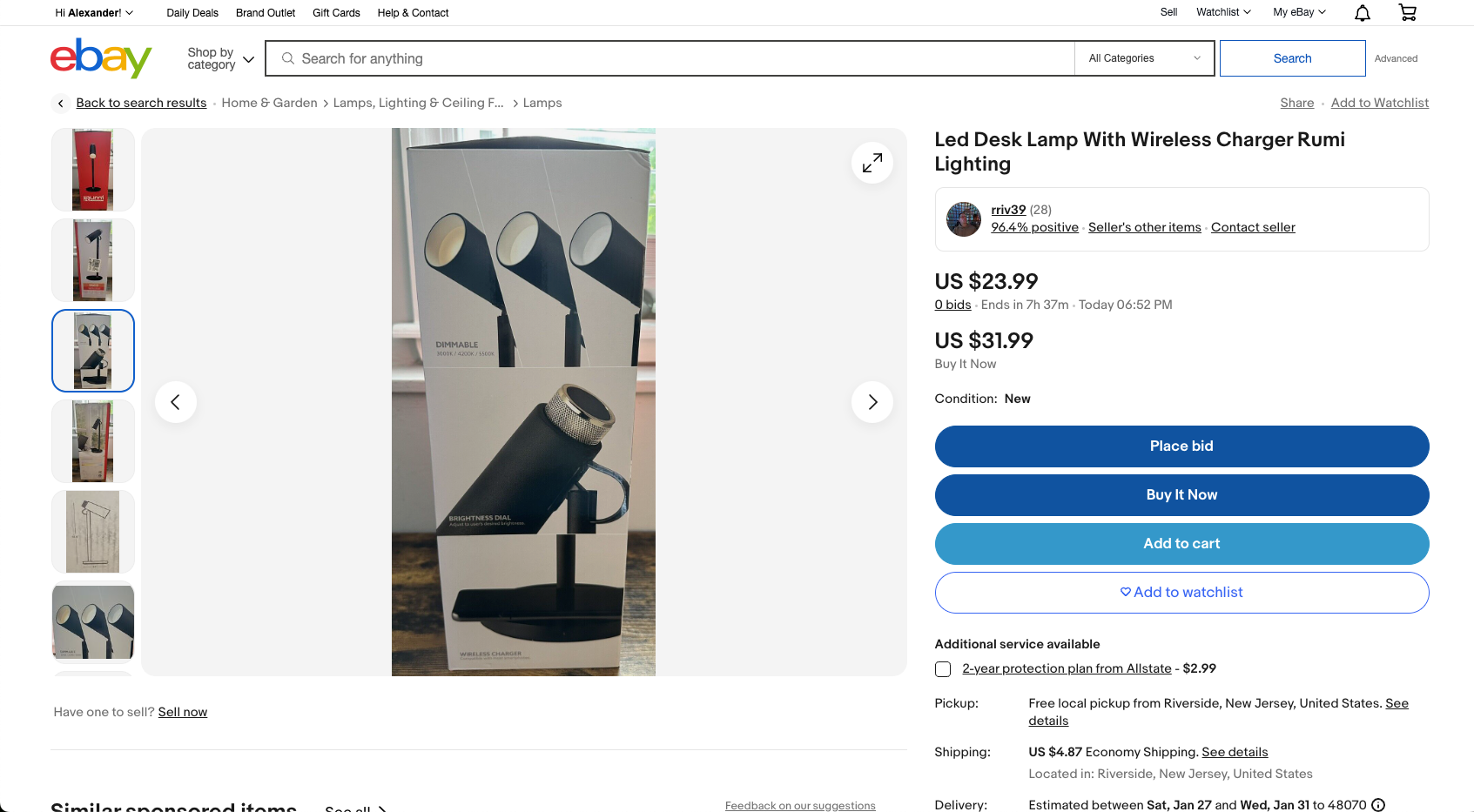


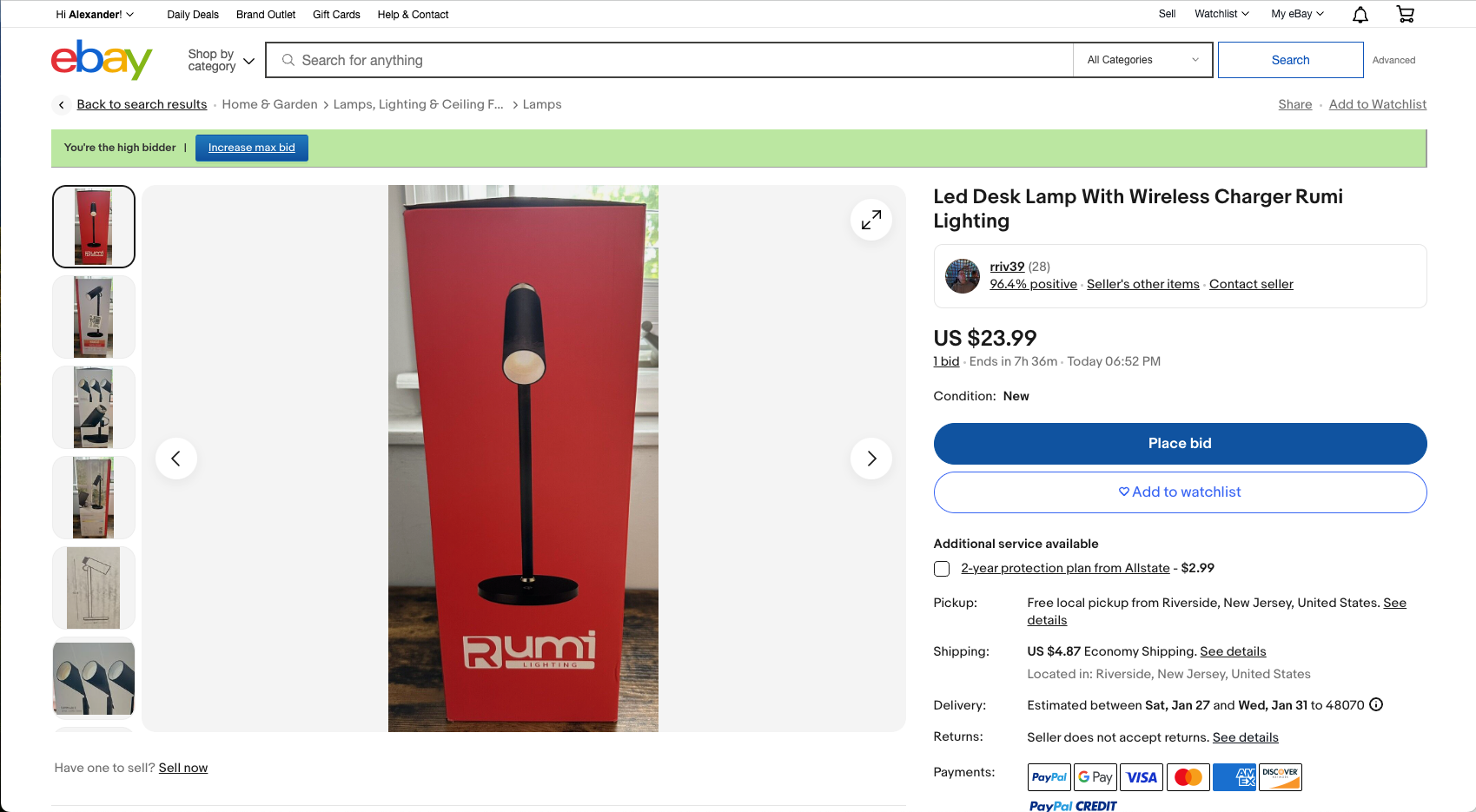
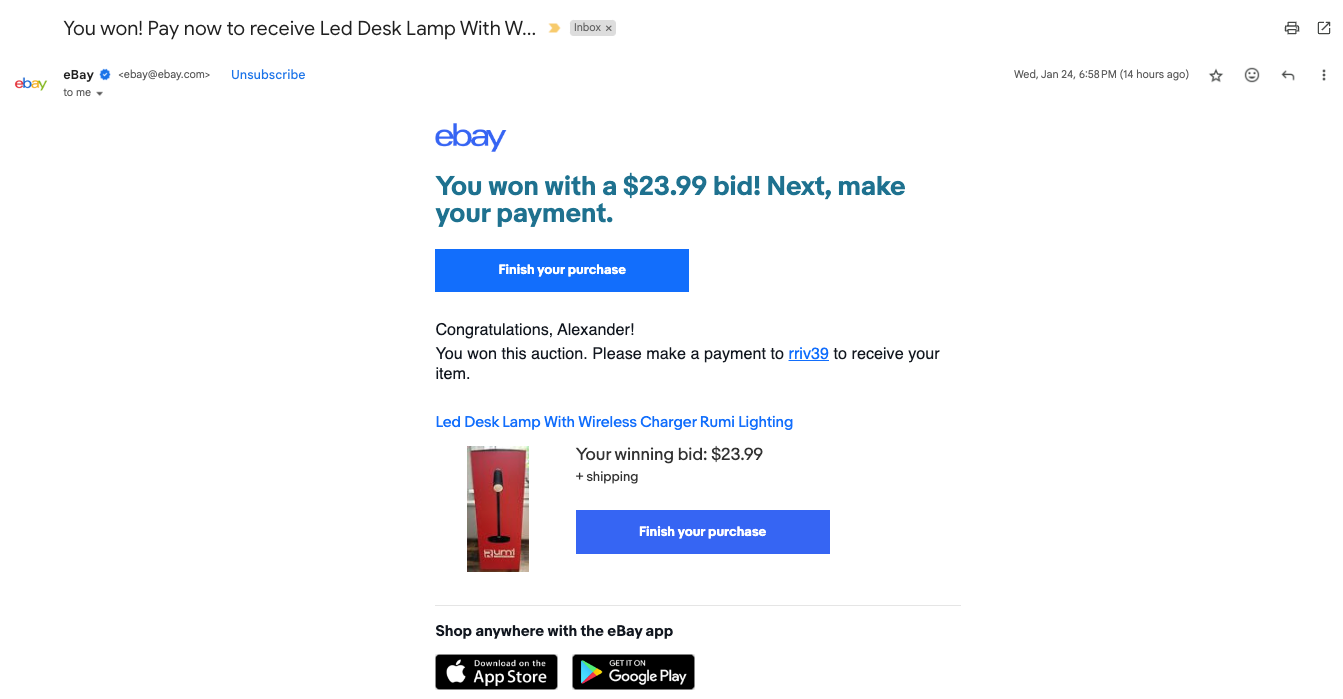
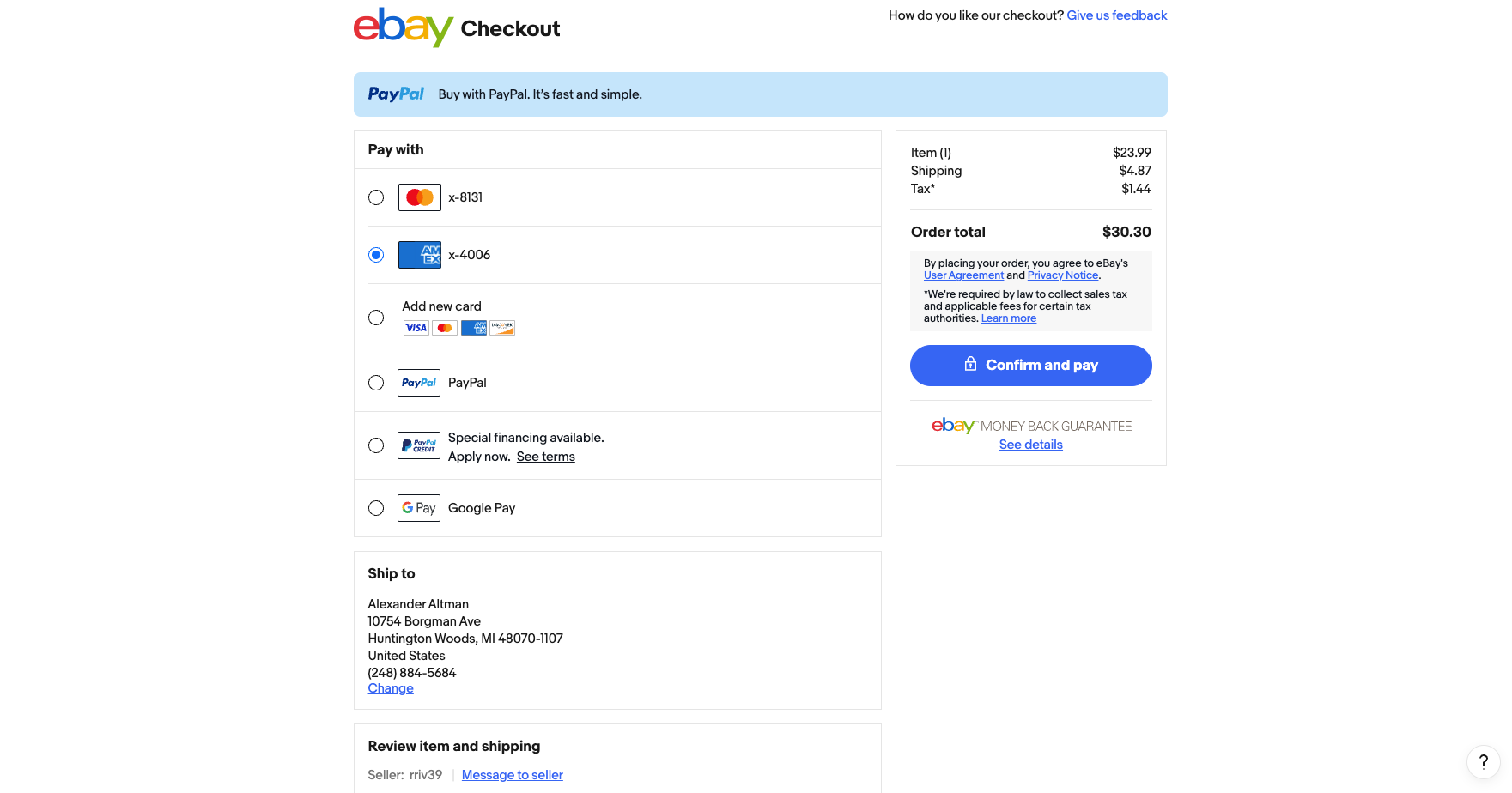
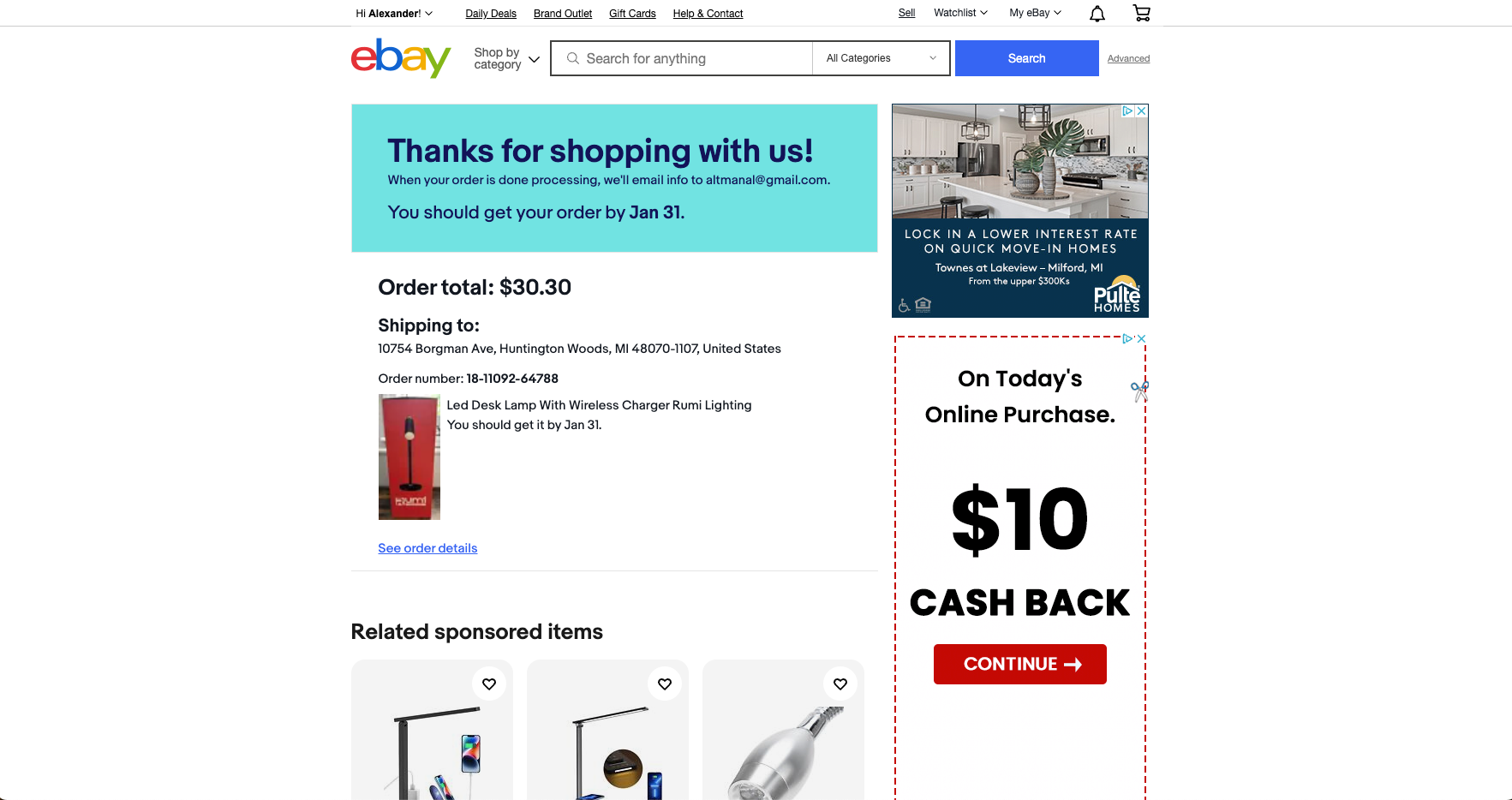
3. Redesign phase 1 (MVP)
To minimize UPI, we introduced a modified auction experience in June 2023. In this new flow, we collected the buyer's payment information before they placed a bid. If the buyer won, their payment instrument would be charged automatically.
MVP flow
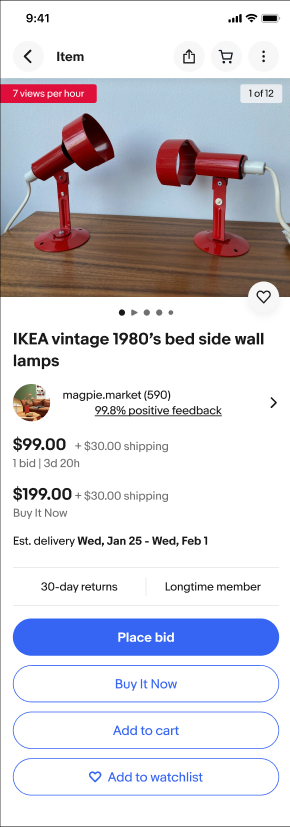
View item page
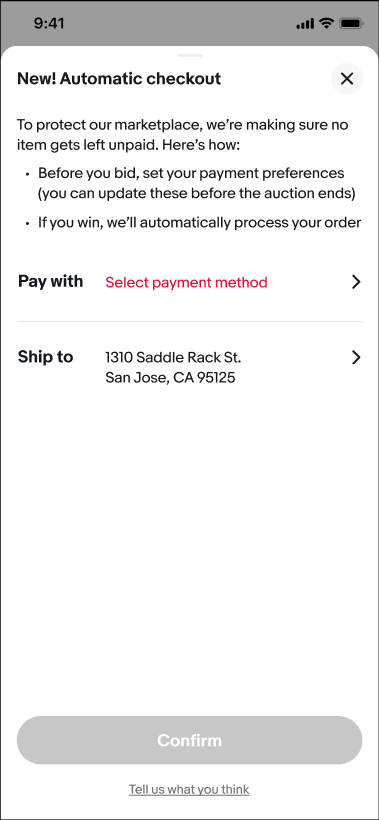
Education bottom sheet for new users. One time only activity.
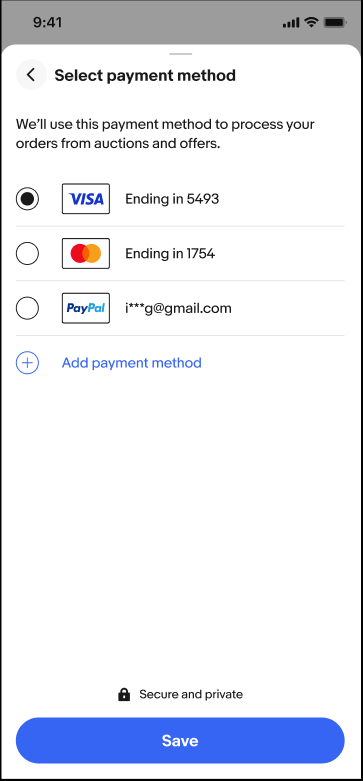
User selects their payment instrument.
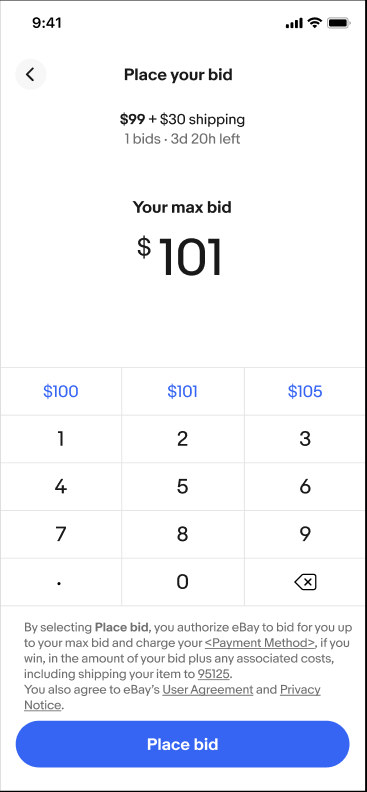
User places their bid.
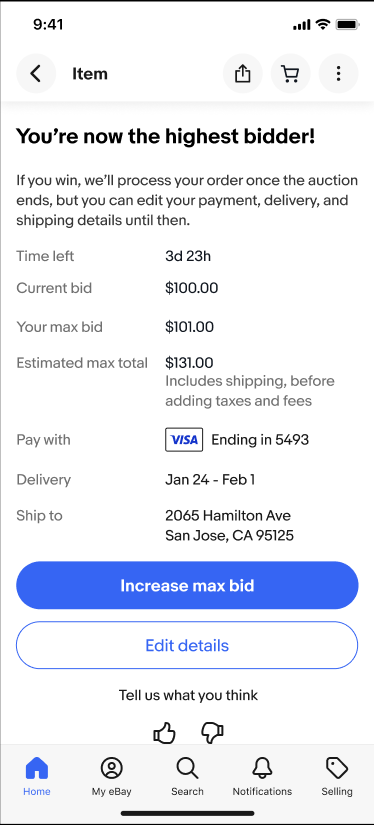
Highest bidder screen with education.

User can edit their details until the auction ends.
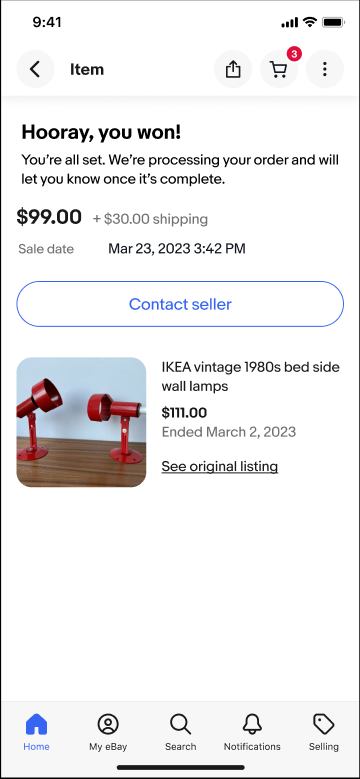
You won screen. Payment processing.
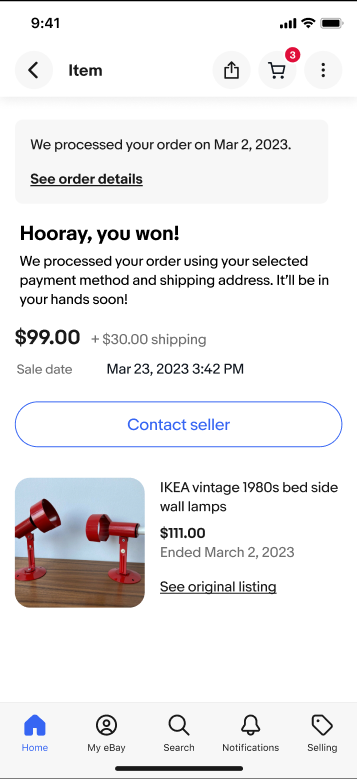
You won screen. Payment processed.
Results from A/B test
We ramped the MVP autopay experience to 20% of our customers in the US and saw promising results, including a 70% decrease in overall UPI rate. The positive trends were validated by solid feedback from our buyers—even long-standing customers who've never abused our functionality.
4. Redesign phase 2
Despite the positive feedback, autopay still presented several issues that would hinder our ability to scale. Among the key insights we had to account for:
1) Better education: To minimize confusion and funnel breakage, we needed to do a better job of educating buyers about this change.
2) Minimize friction: 47% of auction GMB comes in the last 60 seconds of bidding. We need to ensure we're not hanging "snipers" out to dry.
3) Choice and flexibility: Buyers want access to all checkout features — including gift cards and coupons — and the ability to change their payment and shipping options after they win.
We held a brainstorm in San Jose to discuss how we could address these concerns while keeping our UPI rate low.
UPI Onsite in March 2024 at eBay HQ. I'm the shorty in the Deep V.
Strategic imperatives
During our onsite, I led an exercise to establish auction experience tenets, ensuring core XFN partners were on the same page with respect to our overarching goals. These would be used both as strategic guideposts and a shield against subjective feedback that was contrary to the core team's shared vision.
1. Consistency over personalization: Create a consistent and predictable auction experience that scales to all use cases, so buyers and sellers always know what to expect.
2. Give buyers control: Empower buyers to update their payment and shipping preferences at any point of the flow and be transparent about when they’ll be charged.
3. Maximize upsell opportunities: Unlock incremental GMB by promoting combined shipping and other value-added services after the buyer wins.
2. Give buyers control: Empower buyers to update their payment and shipping preferences at any point of the flow and be transparent about when they’ll be charged.
3. Maximize upsell opportunities: Unlock incremental GMB by promoting combined shipping and other value-added services after the buyer wins.
We also discussed the unique challenges of creating a consistent framework that would scale to all markets, buyer types, price points, and focus categories, while still giving buyers a feeling of control.
Phase 2 solution: 1-hour delay
During our IRL brainstorm, we rallied around the idea of a "1-hour delay" feature. Once an auction is won, the buyer would be given 1 hour to make changes to their order. Otherwise, we'd automatically process payment using their pre-confirmed details.
Benefits of new experience:
-Give buyers time to modify their payment and shipping details after they win the auction.
-Provides a scalable framework for upselling value-added services.
-Works the same for everyone
Risks of new experience:
-Would 1 hour be enough time? What if the auction ends in the middle of the night?
-How much would this raise the UPI risk? Would remorseful buyers find loopholes to abandon their commitment?
Benefits of new experience:
-Give buyers time to modify their payment and shipping details after they win the auction.
-Provides a scalable framework for upselling value-added services.
-Works the same for everyone
Risks of new experience:
-Would 1 hour be enough time? What if the auction ends in the middle of the night?
-How much would this raise the UPI risk? Would remorseful buyers find loopholes to abandon their commitment?
1-hour delay flow
After selling the idea to senior leaders, we started ramping our "1-hour delay" feature to U.S. buyers in July 2024.

Buyer selects "Place bid" on the "View item" screen
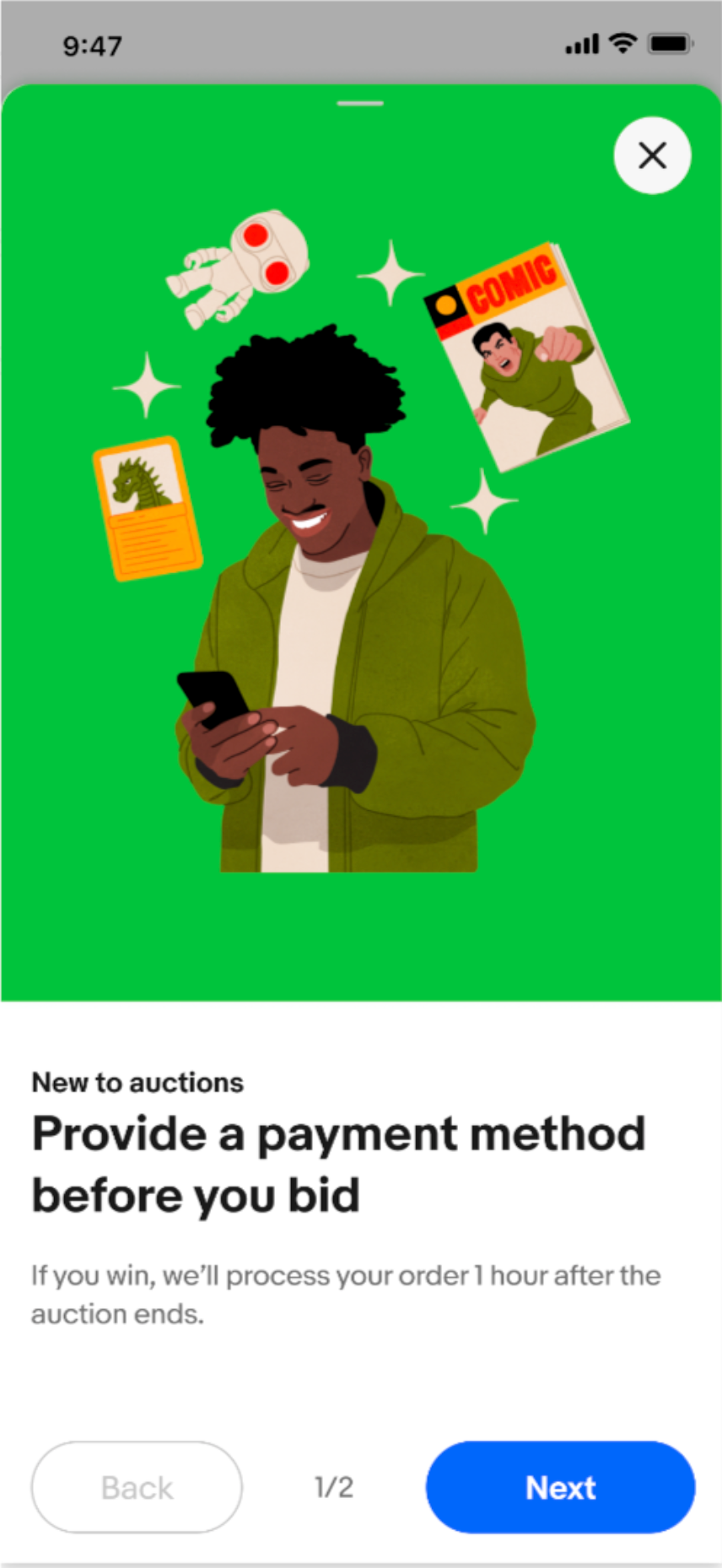


Buyer indicates their payment and shipping information before they bid.
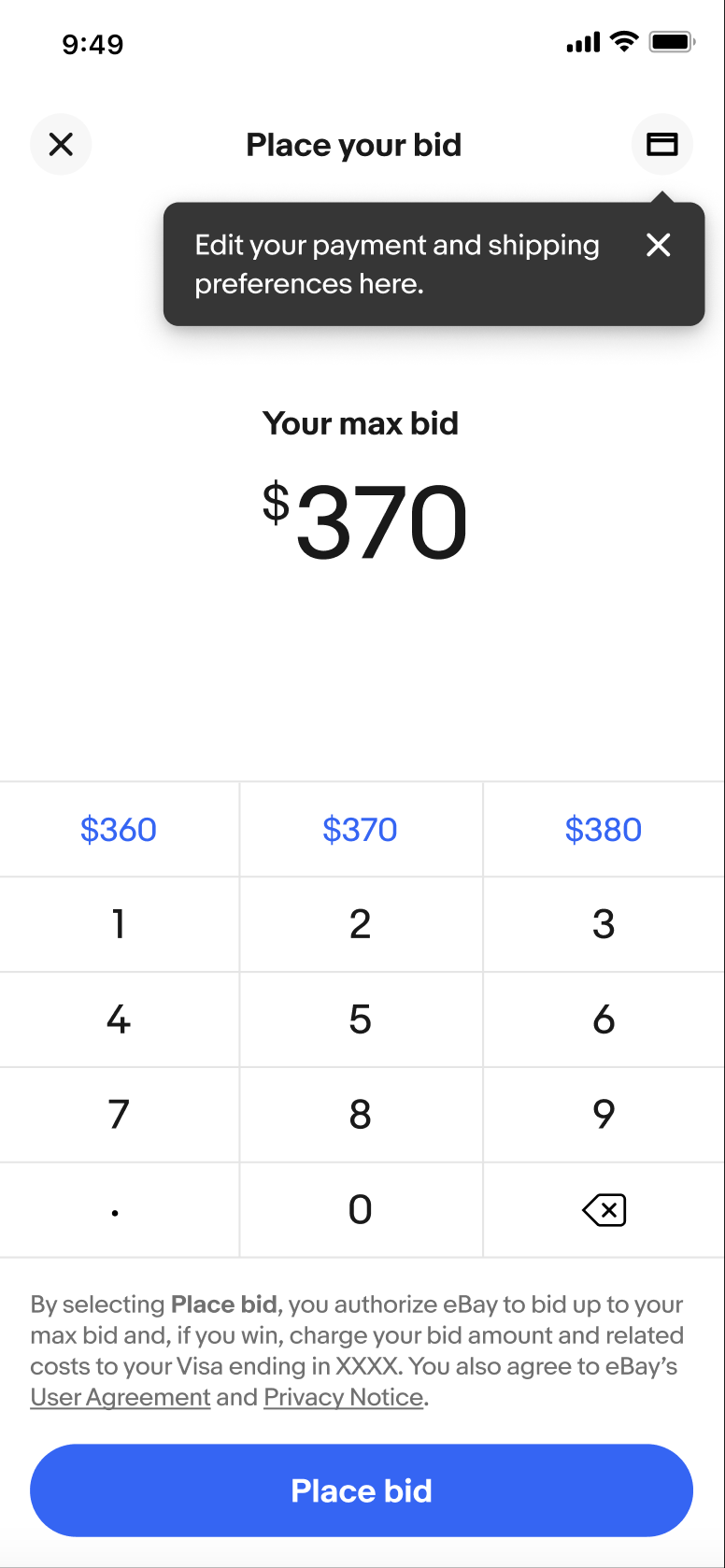
The buyer can modify their payment and shipping details on the place bid screen.
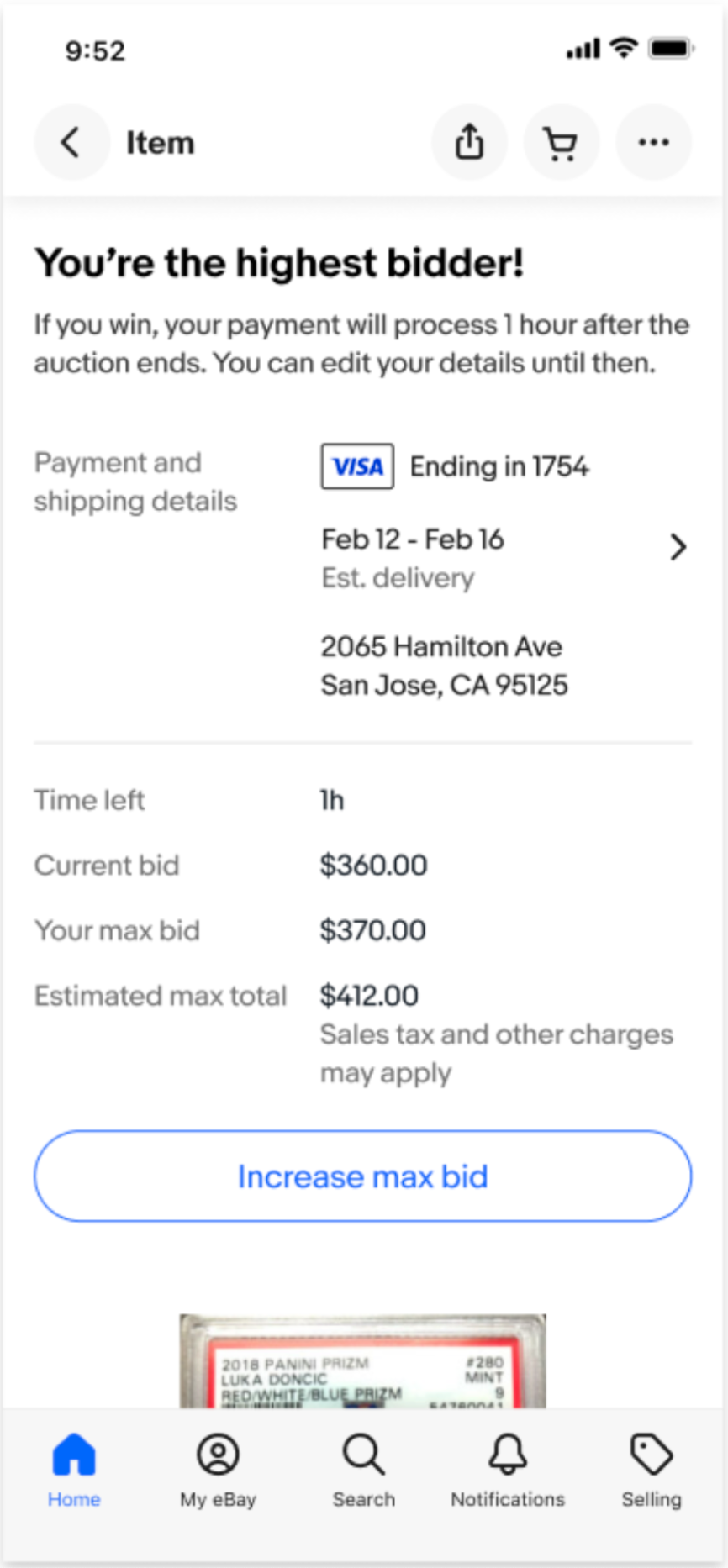

New "You won" screen echoes the joy of winning.

If the user is not present on the app, they get a push notification
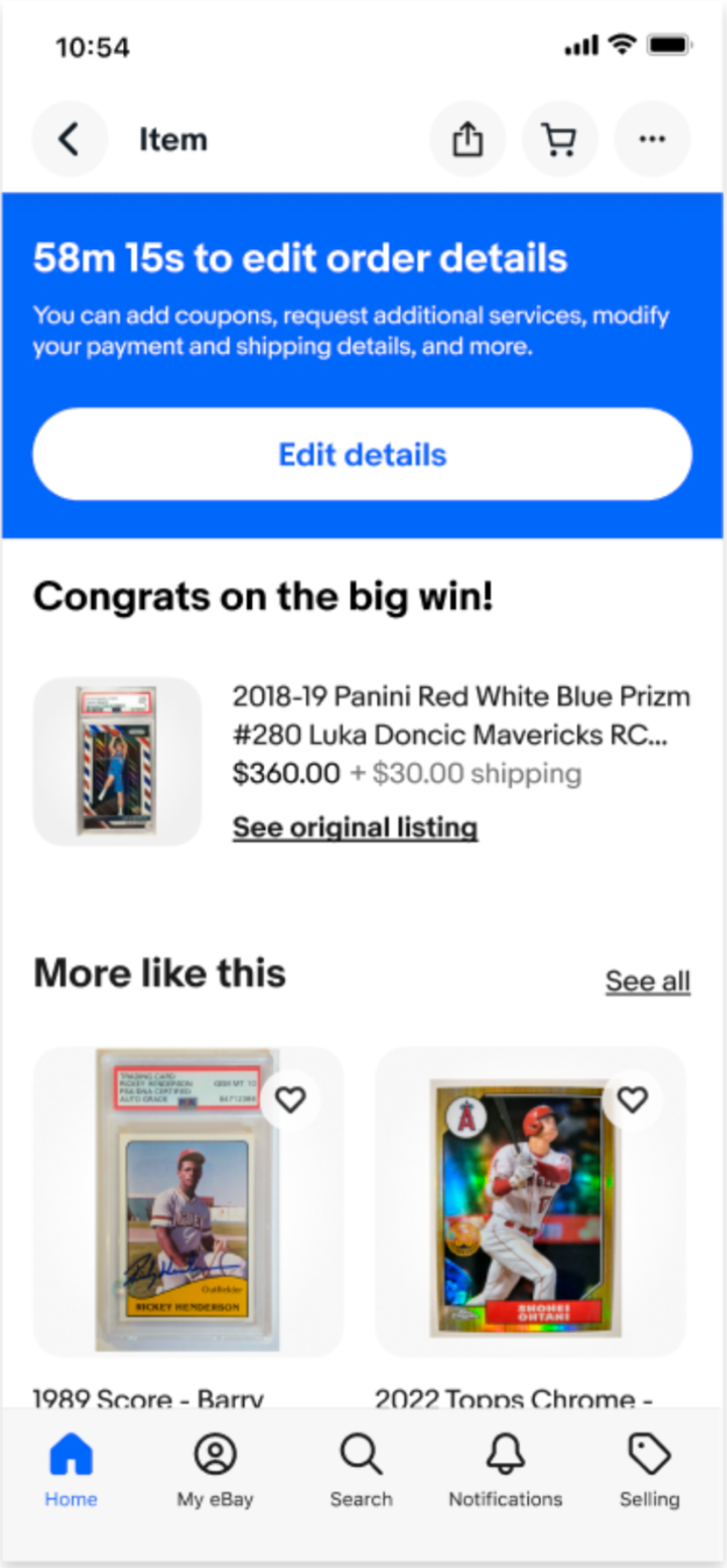
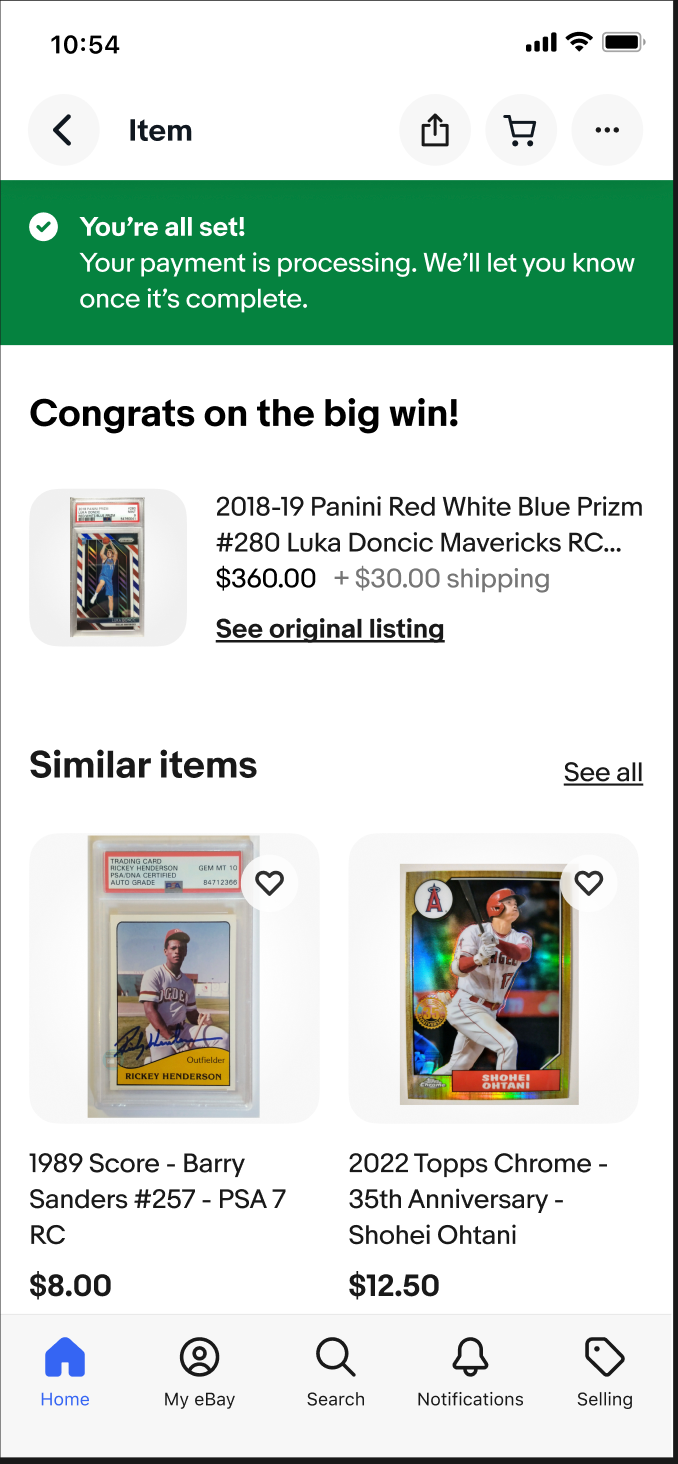
If the buyer sends the item to Vault, they receive a confirmation that their payment is processing.
Post-launch iterations
Throughout the 3-month ramp we stopped to gather user feedback and make changes to address themes that had emerged.
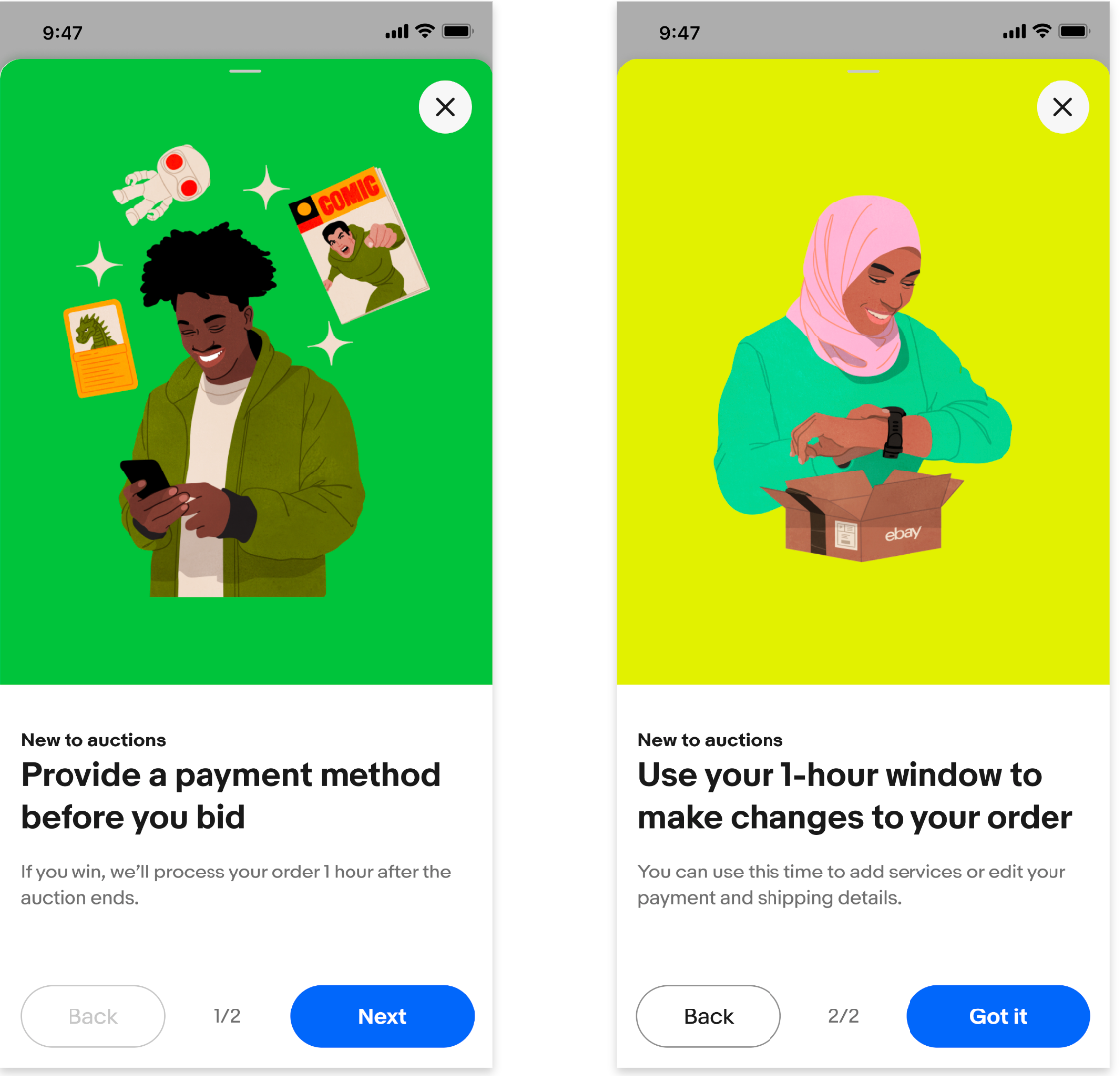
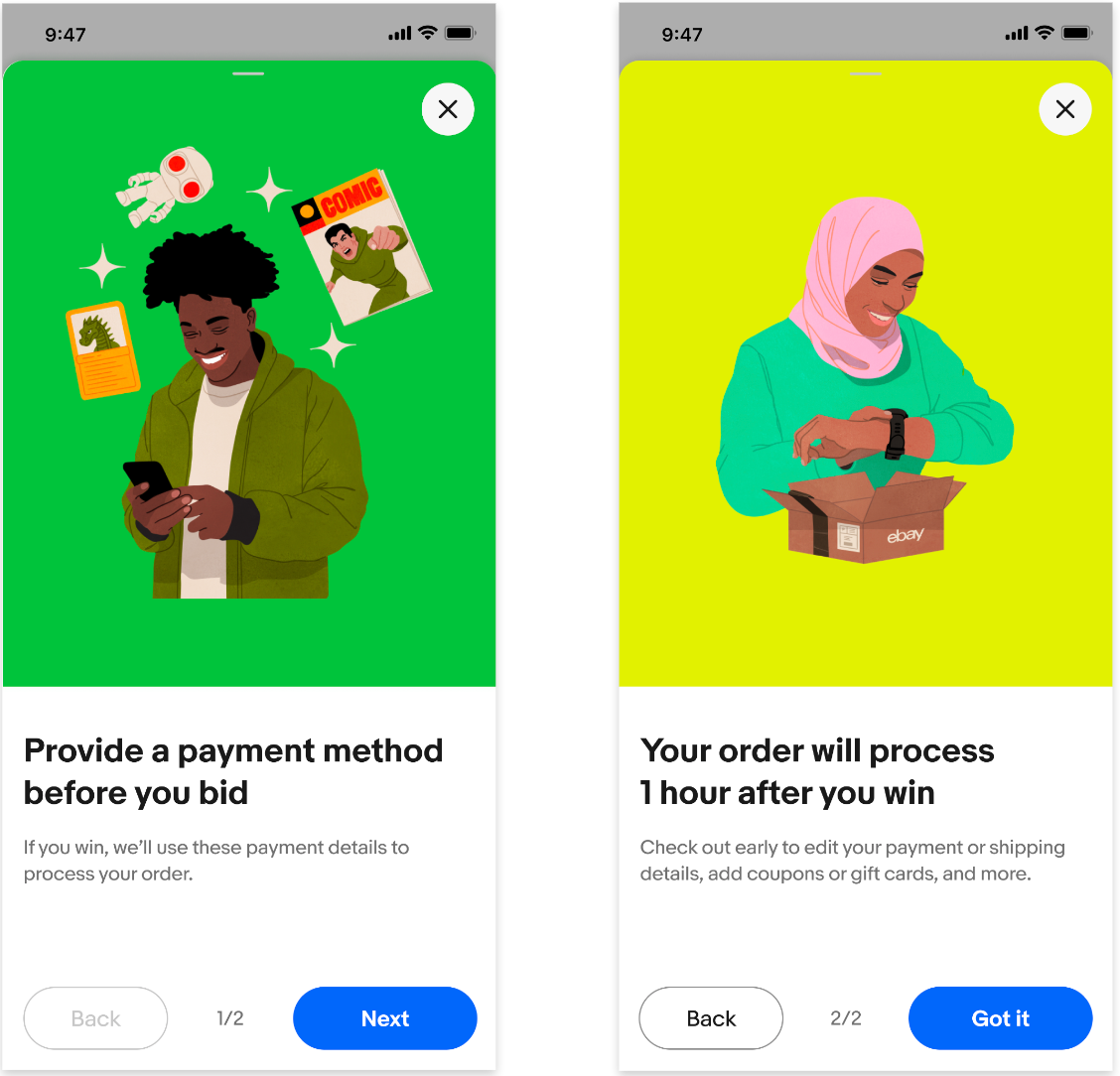
5. Results and learnings
Key performance indicators:
-Reduced UPI cases by 50% within the treated population
-GMB breakage of 20bps
Key learnings:
-Over 55% of buyers are now choosing to manually complete payments during the 1-hour window, indicating a shift towards taking auction commitments more seriously.
-Sellers appreciated the proactive measures to address the issue of unpaid items, which has been a significant concern within the community.
-Reduced UPI cases by 50% within the treated population
-GMB breakage of 20bps
Key learnings:
-Over 55% of buyers are now choosing to manually complete payments during the 1-hour window, indicating a shift towards taking auction commitments more seriously.
-Sellers appreciated the proactive measures to address the issue of unpaid items, which has been a significant concern within the community.
6. Next steps
-Scale this solution all U.S. auctions inventory, including high ASP (average sale price) items.
-Create a simple way for buyers to start a combined order when they win multiple items from the same seller
-Globalize the solution to other key markets, including UK and DE.
-Block worst offenders from participating in bidding.
-Create a simple way for buyers to start a combined order when they win multiple items from the same seller
-Globalize the solution to other key markets, including UK and DE.
-Block worst offenders from participating in bidding.